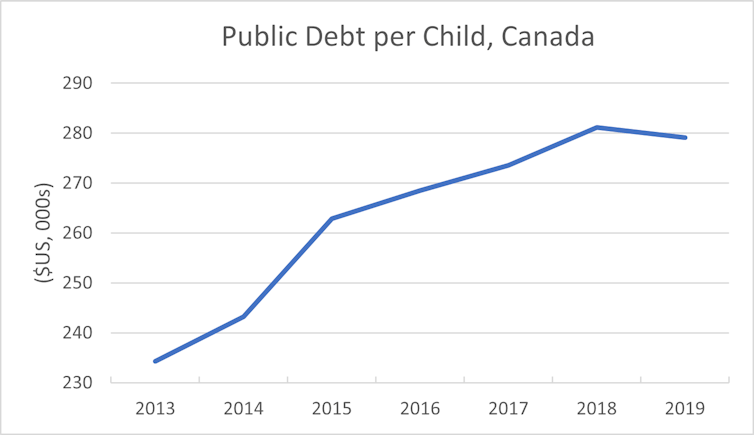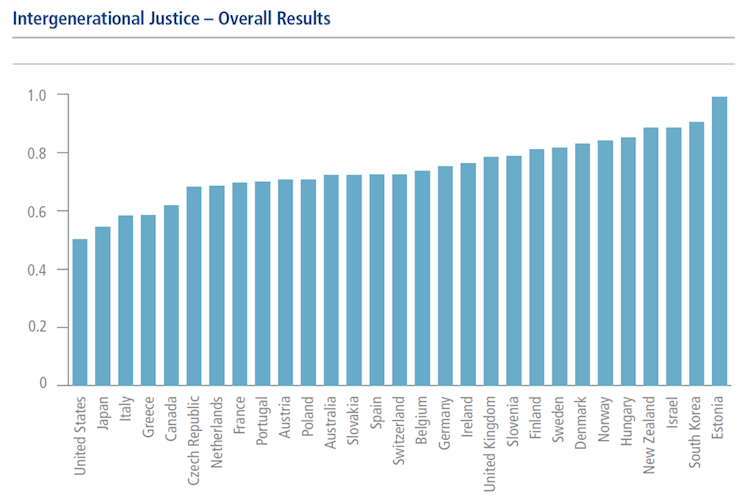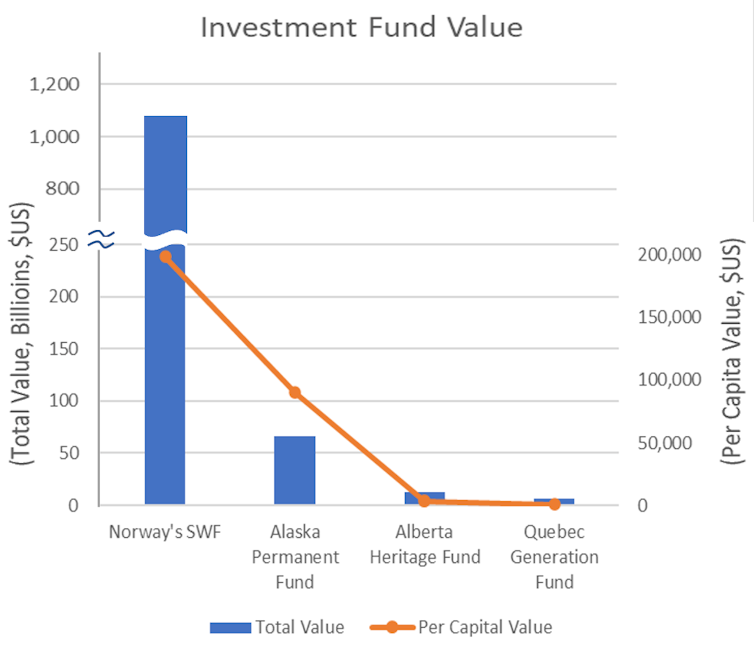Canada News
Huge government debts mean Canada is robbing its kids

Ben Wicks/Unsplash
Before the pandemic, the combined federal and provincial Canadian debt totalled $1.4 trillion. And since then, this debt has rapidly grown, with governments borrowing another $300 billion in the current year alone. This debt will be mostly repaid by our children, their children and their children’s children.
This raises a moral matter of how we are treating our young and future Canadians. Is it ethical for governments to increase spending by placing greater debts on future generations?
Isn’t contractually placing our children into a monetary form of debt bondage morally indefensible? And how might we objectively judge government borrowing policies to ensure justice for future generations?
Golden Rule
One simple but clear standard used to judge fairness between generations is a variant of the Golden Rule, or treat others as you would like to be treated. The University of Ottawa’s Michael Wolfson, a public health professor and statistician, and other academics write that:
“One generation, when it becomes old and frail, should not expect to be treated any better by its children than it treated its parents’ generation in their old age.”
Intergenerational equity is the moral concept of fairness between generations. It’s been widely adopted by the environmental movement. The United Nations Brundtland report on sustainable development asserts that society “make development sustainable to ensure that it meets the needs of the present without compromising the ability of future generations to meet their own needs.”
Unfortunately, intergenerational inequity in Canada is worsening. The federal Liberal government’s recent throne speech previewed their upcoming spending priorities. More spending is targeted for national pharmacare, housing, green jobs and infrastructure, child care, business financing and wage subsidies. All this spending is only possible by much more borrowing.
Here are some statistics. Canada’s debt burden per child aged 0–14, is growing and now totals US$279,000, the seventh highest compared to 40 other Organization for Economic Co-operation and Development nations.

(Data compiled from Sustainable Governance Indicators), Author provided
The University of British Columbia’s Paul Kershaw, a public health professor, has also found that government spending on Canadians over 65 years grew 4.2 times faster than spending on those under the age of 45.
Finally, a study by political scientist Pieter Vanhuysse that measured intergenerational justice, placed Canada 25th out of 29 countries, only faring better than the United States, Italy, Japan and Greece. See below:

(Pieter Vanhuysse, Intergenerational Justice in Aging Societies, 2013), Author provided
Low rates don’t justify borrowing
Today some politicians argue that record low interest rates justify massive borrowing — almost as though it’s their duty to borrow at current low interest rates.
Remember, though, that central banks suppress interest rates through credit market intervention. Artificially low rates cannot be maintained indefinitely. Fundamental economic forces will eventually push rates higher based on sentiments towards risk, expected inflation and competition with private sector borrowing. And when Canada’s debt comes due, it will be rolled over at higher interest rates with a punishing effect on our future taxpayers.
Intergenerational equity is particularly important to governments like Canada’s that rely on revenue from extracting non-renewable resources. These governments sometime allocate a portion of their resource revenue into an investment fund for the benefit of future generations, so they too can share in the non-renewable resources being consumed today.
Four such investment funds come to mind — Norway’s Sovereign Wealth Fund, Alaska’s Permanent Fund, Alberta’s Heritage Fund and, more recently, Québec’s Generations Fund.
The graph below shows how successful these governments were in investing and growing their funds into meaningful future benefits:

(Author’s calculations), Author provided
Based on growth and size, Alberta’s fund has not been successful. Since Québec began saving much more recently, it is too early to judge its success.
All of this strongly suggests that Canadian governments are failing to treat future citizens fairly. What policies, then, should Canadian governments enact that offer greater fairness to our children and their progeny?
Necessary policies
— Match consumption with debt payment. Public sector borrowing and debt repayment should be tied to consumption. For instance, if a government borrows to build a hospital with a 50-year lifespan, then we should pay off that debt over the life of the hospital. Citizens benefiting from the hospital would be responsible for the interest and principal payments. Current tax revenue should pay for the hospital’s operating costs.
— Put aside a portion of revenues from non-renewable resources. If federal or provincial governments earn revenues from non-renewable resource extraction, they have an obligation to invest some of those revenues for the benefit of future generations. Such funds must be free from political interference and have a clear mandate to serve future Canadians.
— Borrow to invest in productive infrastructure. Borrowing for infrastructure development is useful. A few examples include building transportation networks, ensuring high-speed internet throughout the country, and investing in education, all of which can help the economy grow. A larger economy in turn allows for greater sustainable borrowing.
— Government generational accounting. Kershaw raises the importance of governments regularly reporting on taxation, age-related expenditures and debt sustainability. Generational accounting can be used to assess the government’s actions towards implementing the Golden Rule when it comes to future generations.
If there is even a glimmer of hope that politicians recognize their obligations to posterity, it was during a recent CBC interview with federal Conservative Leader Erin O’Toole, who said:
“We have to make sure that, if we’re basically indebting our children, we’re doing it for strategic, smart reasons.…”
Jerome Gessaroli, Faculty, Financial Management, School of Business, British Columbia Institute of Technology
This article is republished from The Conversation under a Creative Commons license. Read the original article.





















